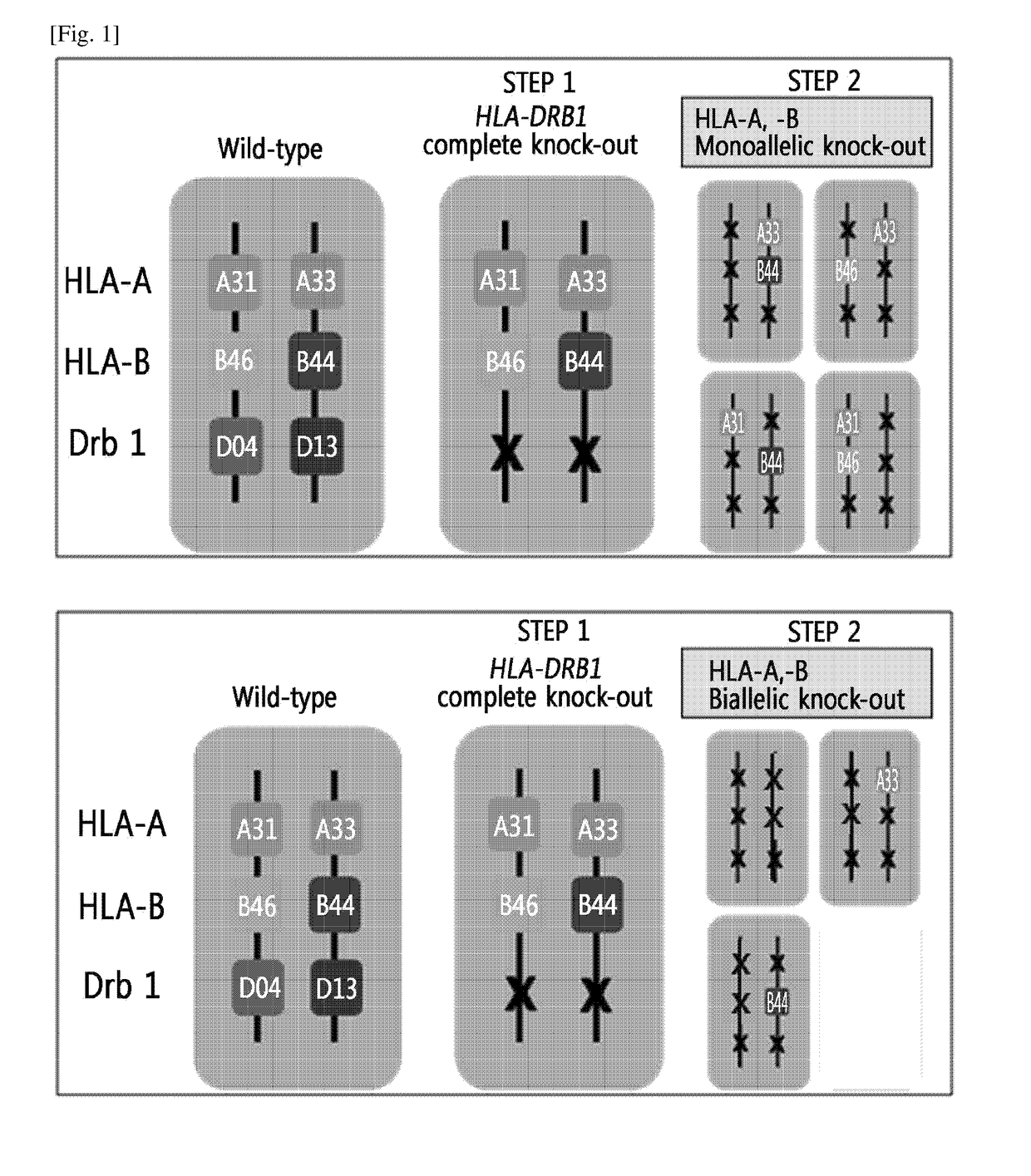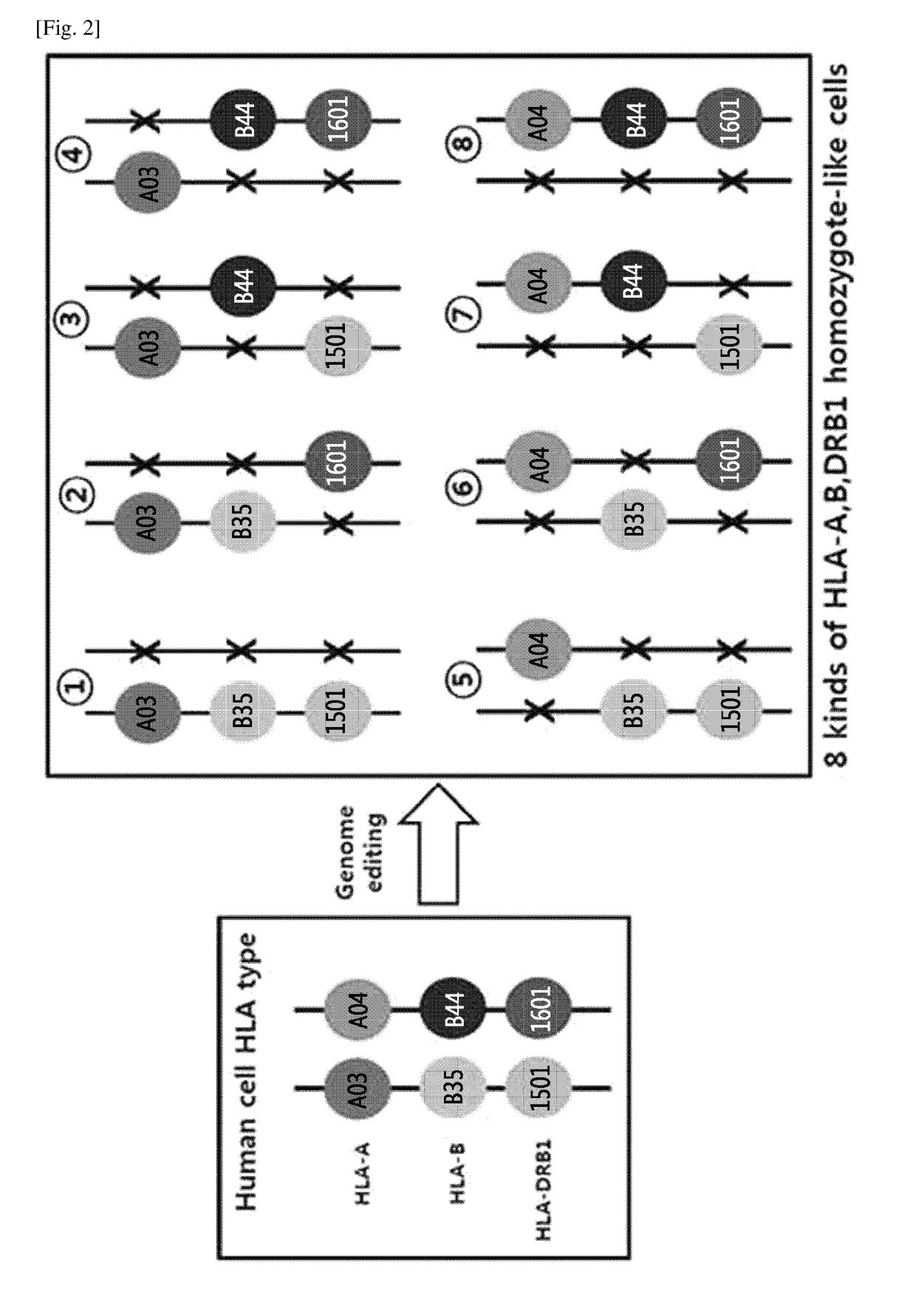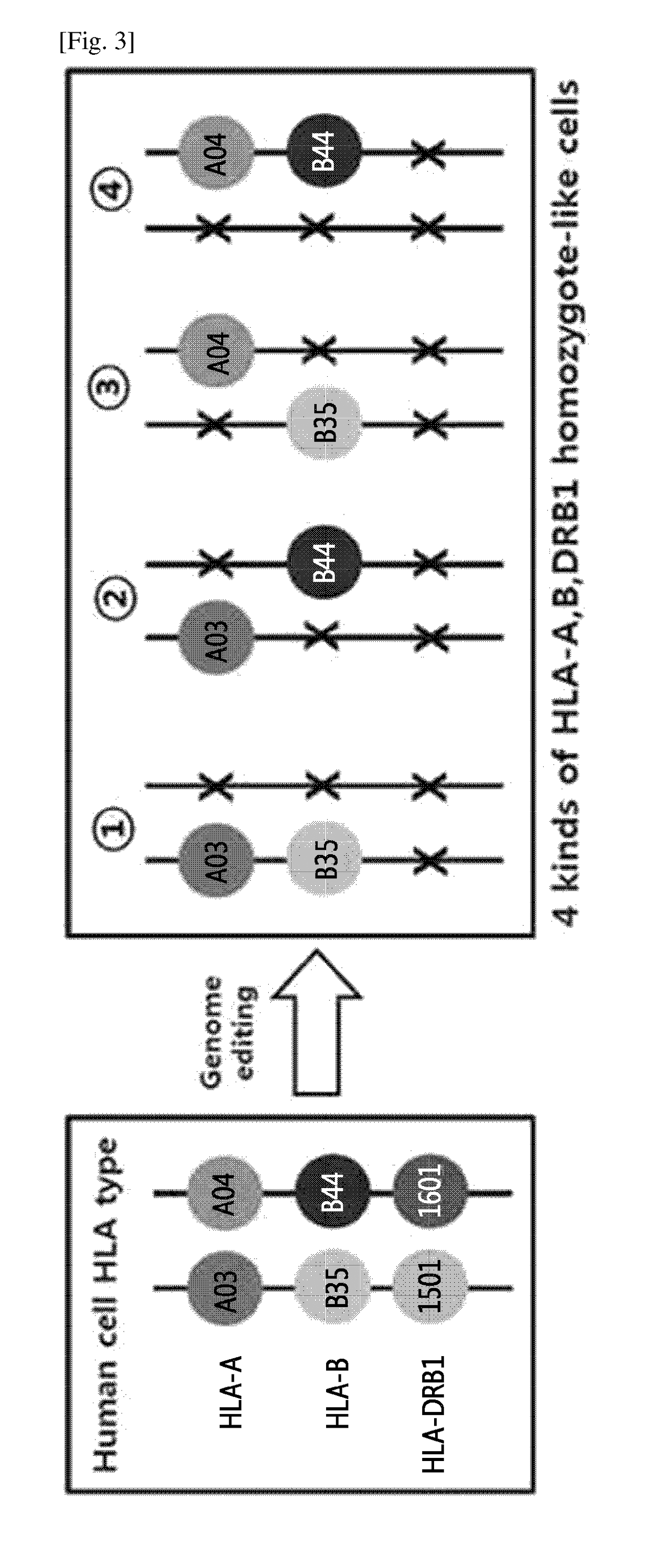Immune-compatible cells created by nuclease-mediated editing of genes encoding HLA
a nuclease-mediated editing and immune-compatible technology, applied in the field of immune-compatible cells created by nuclease-mediated editing of genes encoding hla, can solve the problems of inability to offer a practical solution, low efficiency, and immun rejection of allogeneic hesc-derived cells,
- Summary
- Abstract
- Description
- Claims
- Application Information
AI Technical Summary
Benefits of technology
Problems solved by technology
Method used
Image
Examples
example 1
Production of Homozygous-like Cells Through Monoallelic Knock-Out of HLA-A, HLA-B and HLA-DRB1 Genes
[0132]Through the genome editing in an isolated cell in which human leukocyte antigen (HLA)-A, HLA-B and HLA-DR gens have heterozygous genotypes, monoallelic knock-out of HLA-A, HLA-B and HLA-DRB1 genes was performed by using a nuclease to thereby construct eight types of cells in which the HLA-A, HLA-B and HLA-DRB1 genes have homozygous-like properties. The above process was shown in the schematic diagram in FIG. 2.
example 2
Production of Homozygous-like Cells Through Monoallelic Knock-Out of HLA-A and HLA-B genes and biallelic knock-out of HLA-DRB1 gene
[0133]Through the genome editing in an isolated cell in which HLA-A, HLA-B and HLA-DRB1 genes have heterozygous genotypes, one pair of alleles of the HLA-DRB1 gene was removed, and monoallelic knock-out of the HLA-A and HLA-B genes was performed by using a nuclease to thereby construct four kinds of cells in which the HLA-A and HLA-B genes have homozygous-like properties. The above process was shown in the schematic diagram in FIG. 3.
example 3
Introduction of Plasmid Expressing Cas9 Protein and HLA-DRB1-Specific Guide RNA (DRB1 gRNA) Into Human Induced Pluripotent Stem Cells
[0134]Plasmid DNAs expressing a Cas9 protein and a DRB1 gRNA were delivered into a human induced pluripotent stem cell #12 (iPSC#12) by electroporation. Then, the genomic DNA of the resulting colonies derived from the iPSC#12 was extracted. Thereafter, whether the indel (insertion or deletion) was induced at the target sequence within the DRB1 gene was analyzed by a T7 endonuclease I (T7E1) mutation detection assay, and the results are shown in FIG. 4.
[0135]As shown in FIG. 4, as a result of the analysis, among 23 iPSC cell lines, iPSCs in which the indel has been induced at both (paternal and maternal) alleles of the DRB1 gene were determined as 7 cell lines (red arrow); iPSC in which the indel has been induced at the allele #1 (shown as allele 1) was determined as 1 cell line (purple arrow); and iPSCs in which the indel has been induced at the allele...
PUM
| Property | Measurement | Unit |
|---|---|---|
| Compatibility | aaaaa | aaaaa |
Abstract
Description
Claims
Application Information
 Login to View More
Login to View More - R&D
- Intellectual Property
- Life Sciences
- Materials
- Tech Scout
- Unparalleled Data Quality
- Higher Quality Content
- 60% Fewer Hallucinations
Browse by: Latest US Patents, China's latest patents, Technical Efficacy Thesaurus, Application Domain, Technology Topic, Popular Technical Reports.
© 2025 PatSnap. All rights reserved.Legal|Privacy policy|Modern Slavery Act Transparency Statement|Sitemap|About US| Contact US: help@patsnap.com



